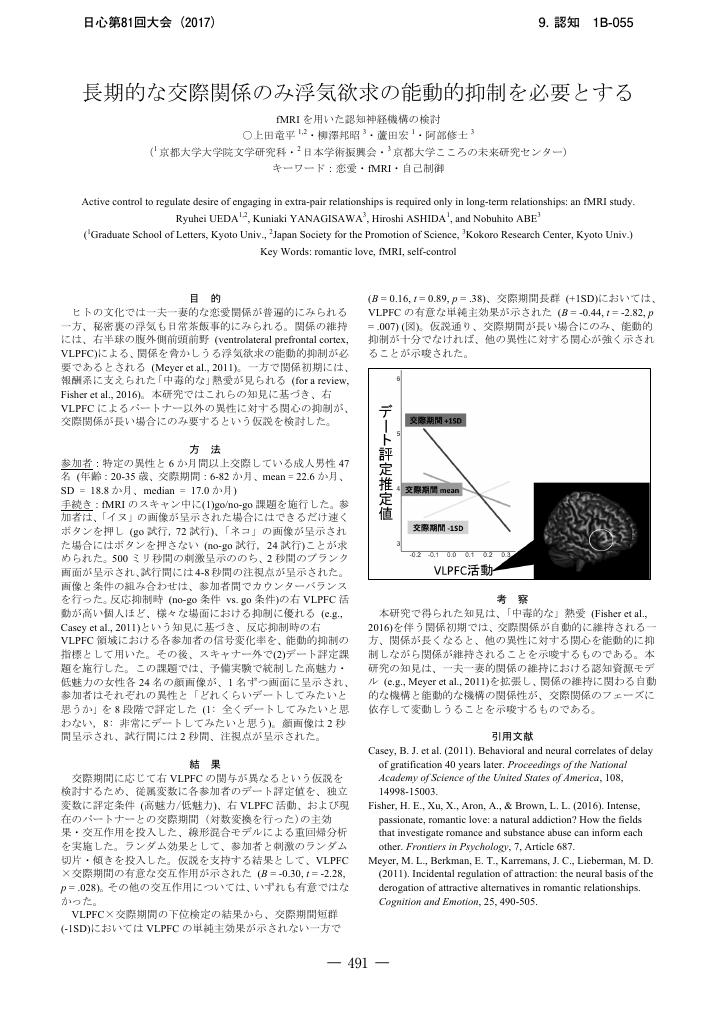2 0 0 0 OA 長期的な交際関係のみ浮気欲求の能動的抑制を必要とする fMRIを用いた認知神経機構の検討
- 著者
- 上田 竜平 柳澤 邦昭 蘆田 宏 阿部 修士
- 出版者
- 公益社団法人 日本心理学会
- 雑誌
- 日本心理学会大会発表論文集 日本心理学会第81回大会 (ISSN:24337609)
- 巻号頁・発行日
- pp.1B-055, 2017-09-20 (Released:2020-03-27)
- 著者
- 塩川 史崇 上田 竜平 蘆田 宏
- 出版者
- 電子情報通信学会
- 雑誌
- 電子情報通信学会技術研究報告 = IEICE technical report : 信学技報 (ISSN:09135685)
- 巻号頁・発行日
- vol.118, no.487, pp.105-109, 2019-03-07
1 0 0 0 OA 親密な異性間関係の維持に関わる認知神経機構:能動的・自動的抑制機構の相互作用的関係性
- 著者
- 上田 竜平
- 出版者
- 心理学評論刊行会
- 雑誌
- 心理学評論 (ISSN:03861058)
- 巻号頁・発行日
- vol.63, no.1, pp.3-24, 2020 (Released:2021-07-27)
- 参考文献数
- 172
- 被引用文献数
- 1
In human societies, close monogamous relationships are prevalent, whereas clandestine extra-pair relationships are also frequently observed. The successful regulation of amorous temptation toward alternative partners could have a crucial role in stable relationship maintenance. Researchers in the fields of anthropology, social psychology, and evolutionary psychology have suggested models to describe the processes of close relationship building and maintenance. Such an intimate relationship is deeply correlated with successful species survival; thus, specific cognitive and neural mechanisms are expected to support the suppression of amorous temptation. Cognitive science researchers following this prediction have focused on active regulation and automatic regulation processes. Since the 2000s, functional magnetic resonance imaging has also been widely utilized to investigate neural mechanisms. However, the interactive relationships between the two regulation systems remain unclear. In this paper, I review the regulative processes of amorous temptation and present a hypothesis that the two regulation systems could interact to suppress temptation, depending on factors such as an alternative partner’s attractiveness and the relationship stage. Empirical approaches could enable scientists to reveal individuals’ internal cognitive processes, which has remained unclear in other fields.
